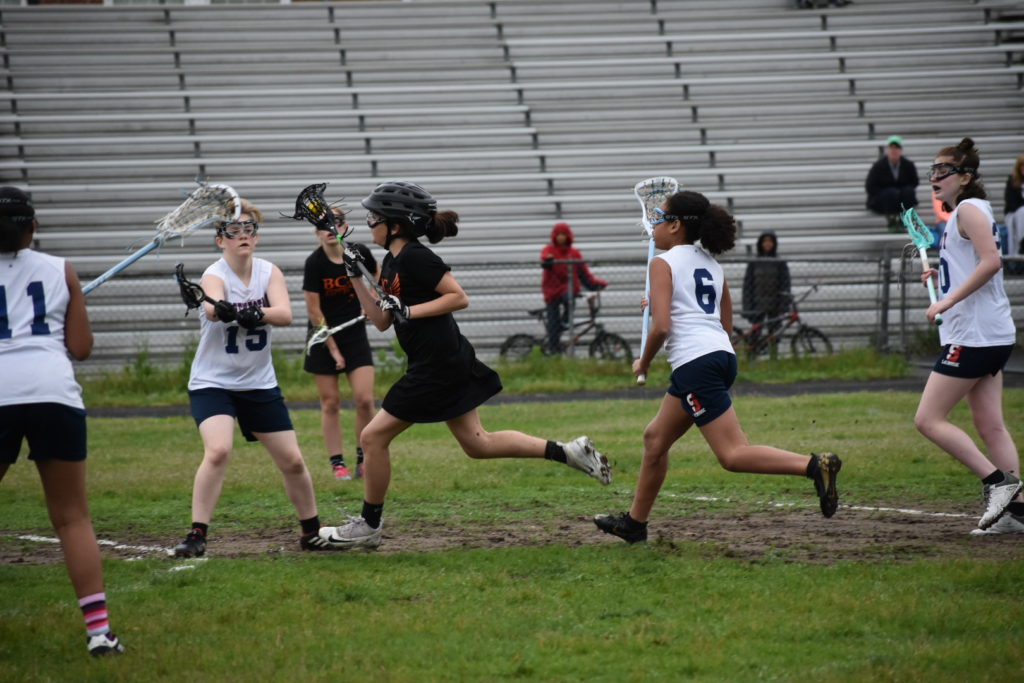The idea that introducing helmets into today’s game will create a “gladiator effect” and thus increase aggressive play and injuries has been a major crutch supporting the rationale for not mandating the use of helmets. The same argument is typically accompanied by the view that, instead rules governing the game and officiating should be strengthened. The reality is that this argument lacks a single piece of scientific evidence instead relying on opinion. In fact, the only scientific studies of a change in the nature of an athlete’s play I have seen are in rugby, cycling https://www.theguardian.com/lifeandstyle/2016/sep/22/bicycle-helmets-reduce-risk-of-serious-head-injury-by-nearly-70-study-finds and skiing.https://www.ncbi.nlm.nih.gov/pubmed/27876383 (study in CO). https://qz.com/621502/if-youre-not-wearing-a-helmet-on-the-slopes-youre-the-weird-one/ In each of those studies, the opposite was shown: when wearing headgear, there was NO evidence that the nature of an individual’s performance changed while the safety benefits were extremely positive.
The “gladiator effect” is, in my opinion, a myth that simply will not die — despite the fact that there’s not a single piece of published research that I’m aware of that actually proves this idea that if you put a piece of protective equipment on an athlete they will simply, as a result of wearing that protective equipment, become these super-aggressive, high risk-taking players. Girls’ lacrosse players can’t play more aggressively unless the officials, the coaches, their parents, the policymakers allow them to do so. – Dr. Dawn Comstock, PhD in Public Health Epidemiology from the University of California San Diego/San Diego State University.
Reform the Education of the Game
This argument is introduced with an acknowledgment of the excessive number of concussions and brain injuries within the game, but instead focuses on the reform of rules, education, and officiating. However, historically this has been tried at both a national and regional level and yet, the occurrence of concussions has not diminished. This correlation between past rule and officiating efforts and the continued rise in concussions proves that this is not, alone, a tangible solution. And, for those convinced that rule-changes and officiating can impact dangerous play, the introduction of new rules after a headgear mandate remain an option to mitigate any real concerns of the “gladiator effect”. And in the meantime, girls lives are being permanently damaged due to concussions that could be prevented or whose severity could be reduced.
It is also worth noting that historical arguments were similarly made prior to the introduction of helmets in hockey and even eyewear in women’s lacrosse. Today few would say that eyewear should be eliminated due to changes it brought to the game. Thanks to the availability of ASTM approved headgear and the willingness of some to use it, there are modern anecdotal examples that support the science.
As someone that has coached both youth and high school teams, I have seen both my daughters play wearing headgear and the nature of their play has not been any more aggressive than previously. In addition, I have played against teams, including one where a majority of their players wore headgear. They were no more aggressive than any other opponents we played. Here is a quote from that team’s head coach.
I have coached the girls game for 10 years from youth to competitive club to high school. During this time I have seen the game transform and I have become alarmed by the tragedy that major concussions have had on several girls I have coached and cared about. As a result, I strongly encourage my players (and their parents) to wear helmets. Our high school team is known to wear more helmets than any other in the region. Concussions will not go away, but I now know first hand that helmets do NOT change the way girls play.” – Avi Orenstein, Head Coach, Las Lomas High School, Northern California, US Lacrosse Level 3 Certified Coach
There is another argument, or fear, that often accompanies this discussion: “Introduction of helmets will change the game.” While this is a legitimate concern about any new rule, the reality is that the game has changed but the rules have not kept pace.
Anyone saying the game hasn’t gotten faster and more physical has not been to a girls lacrosse game recently. Headgear isn’t changing the game. We just need to play smarter and give our girls every advantage we can. My team wore helmets this year, I had 0 concussions, last year I had three girls concussed. Those are just the facts”. – Joe Ferraro, Tampa Catholic High School Coach, Florida
Anyone who suggests that the introduction of helmets into the girls game will change the game has not been paying attention. The game has changed dramatically and is not a highly physical game with harder shots, more checks and stronger athletes. – Kristen Mullady, Founder, Lax+ Lacrosse Club (CT), Head Coach Springfield College, MA, NewMAC Coach of the year, 2011, 2015, 2017
“I didn’t notice any more violent play. It looked like girls lacrosse.” Clint Lyons, Fleming Island H.S. (Florida) Head Coach.
I am the only player on my team who wears a helmet. I could not care less. I feel safer & I have been hit in the head while wearing my helmet and I know I would have been out. It was no big deal. —Kiara, High School Player, California
As a coach – US Lacrosse Level 3 Certified – for the past nine years, I have witnessed the rapid change in the game this decade. I have also witnessed the devastating effects of my daughter’s brain injury unnecessarily sustained in a lacrosse game. Two checks to the head in short succession lead to my daughter’s fall and a severe concussion. Her recovery took over 1.5 years and was never guaranteed. And she will always remain susceptible to future injury. After dropping out of school and sports for a year, she will always live with the psychological and intellectual changes, darkness and depression she experienced. All of which would have been prevented or minimized had she been wearing headgear.
“I wish I had been wearing headgear when I was hit. I am confident that wearing headgear would have seriously mitigated or prevented my brain injury. I’m 17 and I lost a year of my life. US Lacrosse has the power to prevent other girls from experiencing life-altering brain injuries and concussions. If a helmet prevents one girl from experiencing what I went through, it will be worth it.” – Sophia Kofoed, 8 year lacrosse player
Since her injury, I have heard from and spoken with many girls and parents who have had similar experiences, in some cases years later and still symptomatic. Each injury was caused by being struck in the head by either a stick or ball. And brain injuries are unlike any other sports injury. A brain injury may never heal and the nature, happiness and overall health of a person can be changed forever.
I have also personally seen situations where alarmingly hard checks to the head, when wearing a headgear, have resulted in no injury of any kind. I have had players also relate incidents to me where they know, “…I would be out if I wasn’t wearing my helmet.”
As head coach and a parent of 3 girls that play lacrosse, I witnessed one of my daughter’s, a past concussion sufferer, get hit in the head with a stick while wearing a helmet and suffer no injury. I know that helmets can’t prevent all concussions but the benefit of helmets in the girl’s game is obvious to me.” – Phil Mannoni, Founder, 4Core Lacrosse Academy, President, Walnut Creek Warriors Youth Lacrosse, US Lacrosse Level 3 Certified Coach
When reviewing the science and real experiences of coaches and players, the evidence is clear that mandating headgear will increase the safety of the game protecting girls now. There is not a single peer reviewed study that demonstrates that headgear will cause greater danger to girls. The arguments advanced against mandating headgear in girls lacrosse have been deemed fallacious by science and statistics; headgear will decrease the rate of concussions in girls lacrosse, does not create more dangerous play, and is the most tangible, immediate solution to lessening the occurrence and severity of brain injuries.
Today, wearing an ASTM approved headgear is optional. The reality is that the use of headgear will save the brains of girls who are playing today and tomorrow. Many players are unwilling to wear a headgear due to a stigma around it or the worry of being different. As with the old arguments against eyewear, there are coaches who fear a threat to the game they grew up playing who discourage or forbid wearing headgear. Or they simply go along with the well-known view of US Lacrosse that “helmets don’t prevent concussions.”
Today, possibly unintentionally, through inaction, US Lacrosse has supported this stigma by not taking a strong, clear position based on the scientific evidence readily available and the rapidly amount of crushing injuries girls are experiencing.
We have spoken to countless youth and high school parents about this matter. An overwhelming majority are bewildered that headgear is not a required piece of equipment mandated by the authorities of the game and strongly support the mandating of headgear.
Until US Lacrosse takes action on this matter and mandates headgear, girls will continue to suffer concussions that may be preventable,and parents will ultimately ask why US Lacrosse has not done more to protect players.



